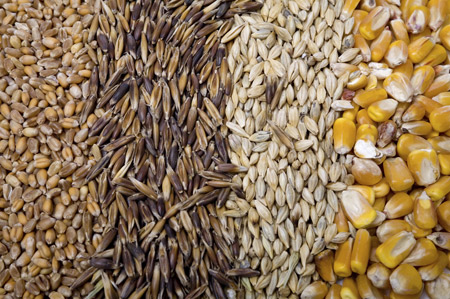 (Reuters) – Grain prices have climbed this month to their highest point of the year, in one of the steepest U.S. planting-season rallies on record, propelled by a perfect storm of acute demand, crop weather concerns, currency gyrations and speculative buying.
(Reuters) – Grain prices have climbed this month to their highest point of the year, in one of the steepest U.S. planting-season rallies on record, propelled by a perfect storm of acute demand, crop weather concerns, currency gyrations and speculative buying.
Now U.S. farmers are nearly finished planting what could be another massive corn and soybean crop, while the market is no longer surprised by Brazilian and Argentine crop losses that helped ignite the rally. So investors are growing nervous about the possibility of a sharp price pullback.
The market has already priced in expectations that Friday’s government supply-demand report will show tighter U.S. and global corn and soybean stocks. The focus has turned toward what the U.S. Department of Agriculture will say on June 30, when it releases its quarterly stocks and planted acres estimates, and in its weekly crop condition reports.
“At some point, there could be something of a train wreck of a pullback, especially in soybeans, because the potential is there to have another very big crop” in the United States, said Ted Seifried, chief market strategist for Zaner Ag Hedge.
PROFITS AND LOSSES
Farmers who sold their crop earlier this spring have been bemoaning the loss of profits. Livestock operations that did not hedge against higher grain prices could see profits squeezed, just as pork and beef wholesale prices are showing signs of recovering for the summer grilling season.
Speculative investors have taken a big stake in commodities as it has looked less likely that the Federal Reserve will be quick to raise interest rates.
In early March, speculators held their largest net short positions on record in Chicago Board of Trade corn and soybeans. They have since shifted to their largest net long position in corn since last August and the largest net long soybean position since September 2012, according to Commodity Futures Trading Commission data.
ROLLERCOASTER
The sector has had a rollercoaster year. In January, grain prices careened toward multiyear lows and the U.S. dollar was at a demand-dampening 12-year high against other currencies. U.S. export demand was weak, South America appeared poised to harvest another massive crop and commodities prices in general were depressed, including crude oil at a 12-year low.
Now, the market has swung violently in the other direction, as a severe drought has hit Brazilian corn production while heavy rains swamped Argentina’s soy crop.
U.S. farmers have welcomed the unusual market turnaround. Just two months ago, many faced the prospect of seeding crops for negative returns.
CBOT December corn, the benchmark contract for the crop to be harvested this autumn, are up 17.5 percent since March 31, the largest planting-season rally since 1973. New-crop November soybeans are up 21 percent, the fifth biggest gain since 1973.
WEATHER
Besides USDA reports, grain traders are focused on summer weather in the United States, with the potential for a strengthening La Nina pattern raising the risk of hot, dry conditions in the heart of the corn and soybean belt.
Any signs of crop troubles could drive prices even higher, causing further headaches for buyers that had grown comfortable with abundant available supplies earlier this year.
Earlier in the marketing season, U.S. corn and soybean export sales lagged the year-ago sales pace by 25 percent or more. Export sales now have nearly caught up after a recent flurry of demand. Some traders now believe the USDA may raise its export forecasts.
“The trade got comfortable with an oversupply mindset,” said Mike Zuzolo, president of Global Commodity Analytics. “We live in a global grain market and a supply problem and lower prices really can stimulate consumption. The elasticity of that consumption is greater than we often assume.”




